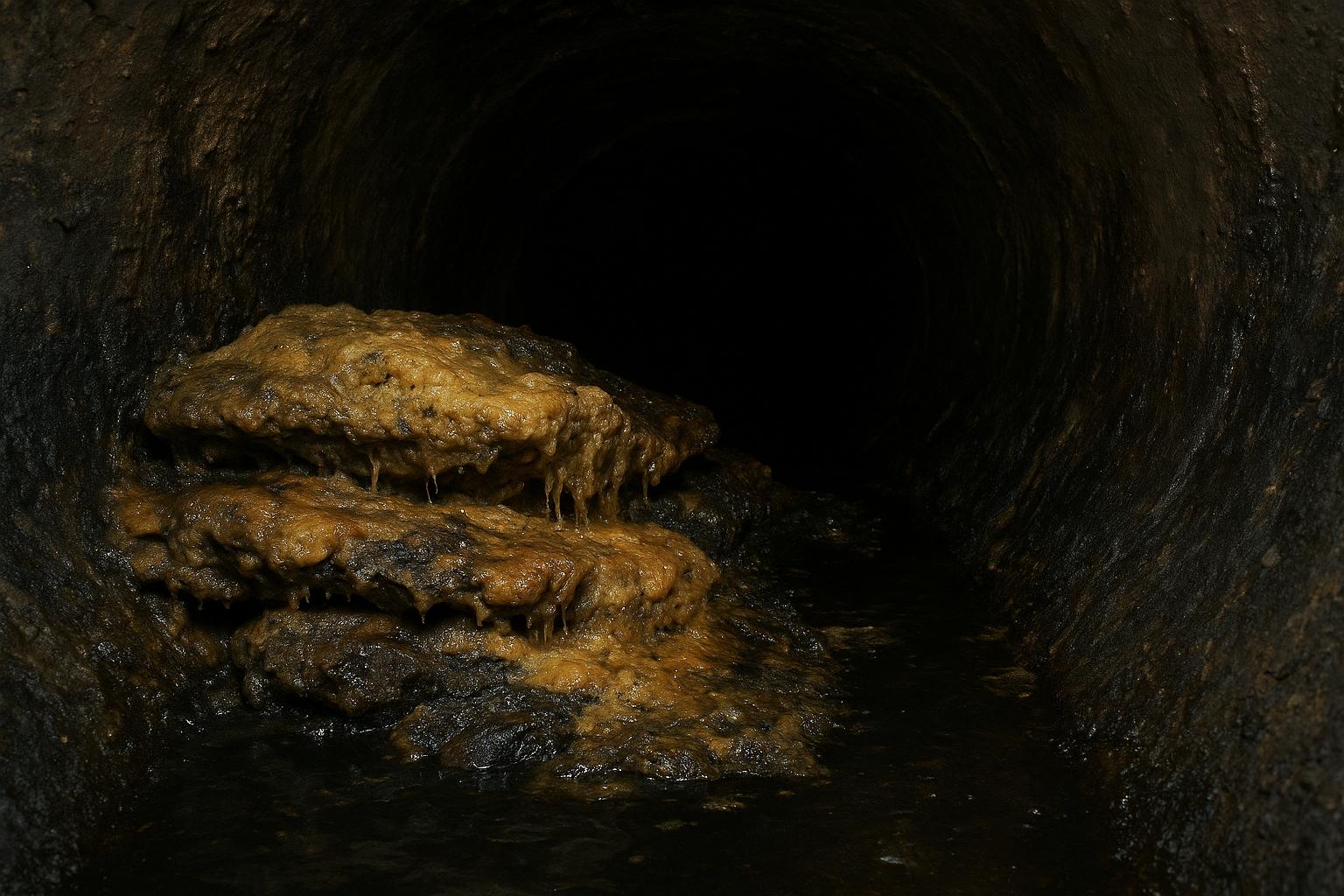A colossal 100-tonne fatberg has been removed from a sewer deep beneath the streets of Feltham in west London, highlighting the ongoing challenges faced by water companies in managing the capital’s ageing drainage infrastructure. The enormous blockage, equivalent in weight to eight double-decker buses, was primarily composed of wet wipes bound together by congealed fat, oil, and grease. Located 10 metres below street level, the fatberg necessitated a month-long effort by Thames Water engineers, who used a combination of high-pressure hoses, picks, and shovels to dislodge the solid mass from a 125-metre stretch of sewer main. The waste was then extracted and transported to landfill as toxic waste.
The work underscores the widespread problem caused by the improper disposal of substances down drains. Fatbergs form when fatty substances combine with non-biodegradable items such as wet wipes, nappies, and cotton buds. Left unchecked, these blockages can cause sewage to back up, leading to serious flooding incidents and pollution of roads, rivers, and even homes. Thames Water estimates that it spends around £18 million annually clearing 3.8 billion wet wipes from its network, and reported nearly 29,000 rag blockages this year alone, with wet wipes a primary component. Fat, oil, and grease blockages numbered just over 14,800, alongside hundreds of blockages caused by concrete and similar debris.
Alexander Dudfield, Thames Water’s network protection engagement lead, described the Feltham operation as “hugely complex,” yet representative of the challenges that arise from neglect at a local pipe level. He emphasised that while monumental blockages in main sewers attract attention, most blockages occur in much smaller pipes, often serving only a handful of households. “When these pipes get blocked, we can’t simply switch off the sewage. It backs up and must come out somewhere, whether that’s roads, rivers or even people’s homes,” Dudfield told The Guardian.
The Feltham fatberg removal follows a similar, though smaller, operation in east London in May 2024, when Thames Water cleared a 35-tonne fatberg near the Abbey Mills pumping station. That fatberg, equivalent to three double-decker buses, was composed of wet wipes, silt, tampons, and condoms and was found 35 metres underground. That removal took 11 days with a 20-engineer team deployed. Thames Water used the event to reiterate the ongoing difficulties they face in maintaining sewer systems and the crucial role public awareness plays in reducing the volume of unflushable items entering the network.
The Feltham discovery comes amid calls from Thames Water’s creditors to the industry regulator Ofwat, seeking up to 15 years of leniency on pollution rules due to the scale of investment needed to upgrade London and southeast England’s sewer infrastructure. The company has grappled with extensive debts accumulated over decades, exacerbated by criticism over dividend payouts failing to match necessary infrastructure investment. This context illuminates the challenges water companies face in addressing the backlog of maintenance and upgrades required to protect waterways and public health.
In response to the growing environmental impact of sewage blockages, the UK government recently announced plans to ban wet wipes containing plastic, recognising their significant contribution to fatbergs. However, behavioural challenges persist, with surveys revealing that nearly half of Britons still dispose of fats, oils, and grease down sinks, further exacerbating the sewer blockage problem.
Thames Water's campaign to raise awareness about the consequences of improper disposal is timely, given the scale and frequency of fatberg removals. The continuing large-scale efforts to clear these enormous blockages serve as a stark reminder of the collective responsibility required—from water companies and regulators to households—to protect the nation's waterways from pollution and disruption.
📌 Reference Map:
- Paragraph 1 – [1], [2]
- Paragraph 2 – [1]
- Paragraph 3 – [1]
- Paragraph 4 – [3], [4], [5], [6], [7]
- Paragraph 5 – [1]
- Paragraph 6 – [1]
Source: Noah Wire Services
